NASA launched Australia’s first commercial rocket into space from East Arnhem Land
The first of three NASA rockets has been launched from remote NT, and the ELA boss has explained what’s next in the space race. WATCH THE INCREDIBLE VIDEO
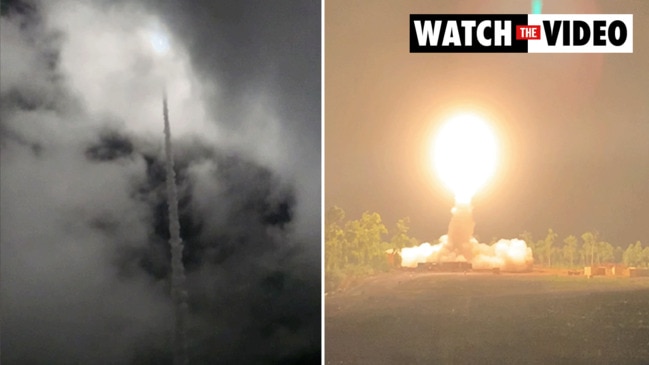
Northern Territory
Don't miss out on the headlines from Northern Territory. Followed categories will be added to My News.
NASA successfully launched Australia’s first commercial rocket into space from the Arnhem Space Centre as about 100 people watched on just before midnight on Sunday.
The rocket launched from the Arnhem Space Centre near Nhulunbuy, on the lands of the Gumatj people who were consulted throughout the process.
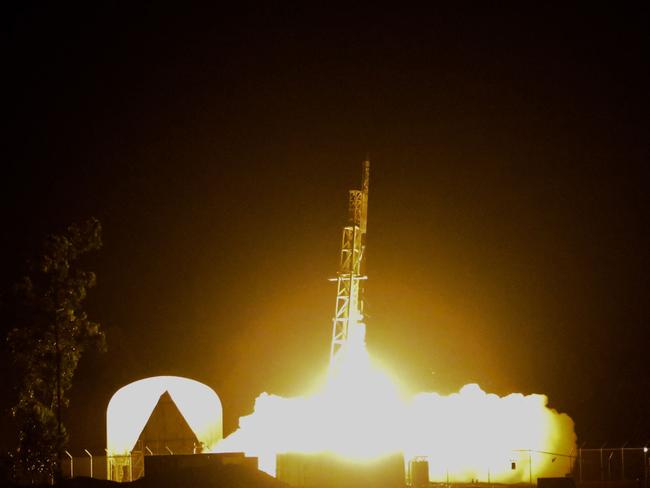
It was scheduled for 10.44pm but was delayed several times because of light rain and wind.
But just before midnight, the sky exploded with colour as the rocket shot up in to space.
When it launched the rocket was only for a matter of seconds before it disappeared from view.
The team from Equatorial Launch Australia (ELA), the project lead, and US space agency NASA will now gather data and information from the rocket’s payload.
The wind proved a useful ally and adversary, contributing to the ‘payload’ landing at a spot near the Bullman community, about 270km from the launch site and within the designated radius.
We're pleased to announce the successful completion of Australia's first ever commercial space launch with @NASAExpeditions.
— Equatorial Launch Australia (@ela_space) June 26, 2022
The launch took place at 12:00am (ACST) and saw a BBIX rocket travel over 300 kms in space to observe the Alpha Centauri A & B constellations. pic.twitter.com/IB2CjxDsC1
ELA executive chairman Michael Jones watched the launch with a crowd of VIP guests, including Chief Minister Natasha Fyles, from a viewing platform about 1.1km from the launch pad.
During an official function at the Garma Knowledghe Centre before the event, Mr Jones thanked the Gumatj Aboriginal Corporation and Traditional Owners in East Arnhem Land and its business community for helping make history happen.
ELA Commercial general manager Russell Shaw said the launch was the first campaign of its kind by NASA.
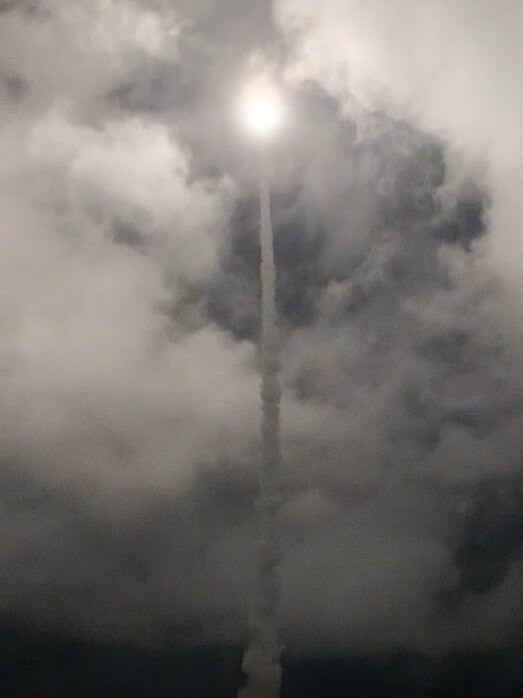
Mr Shaw said the mission would give other organisations the confidence to launch from the Arnhem Space Centre.
He said Nhulunbuy was an ideal location for the rocket launch because of its proximity to the equator.
“The mission is only a success when we recover the payload,” Mr Shaw said.
Ms Fyles said the launch would be a part of history and put the Territory on the international map.
She said young Territorians could look up to the sky and know what could be done.
“This isn’t a far-fetched dream, this is the Australian launch market and it’s estimated to be worth up to $US930m over the four years,” Ms Fyles said.
Northern Land Council chairman Samuel Bush-Blanasi was at the launch and said it was exciting to see the moment come to fruition.
“Since day one, the Northern Land Council has supported Traditional Owners’ involvement in this project,” Mr Bush-Blanasi said.
“There were some people who said it would never happen. But we stuck by Traditional Owners and proved the sceptics wrong.”
On the ground in Nhulunbuy, a collective cheer rang out across the town, with the late night scheduling not deterring hundreds from staying up to witness the occasion.
Space fans from across the world also tuned into the livestream hosted on YouTube, with messages of congratulations and greetings left by keen astronomers from as far afield as Canada and Brazil.
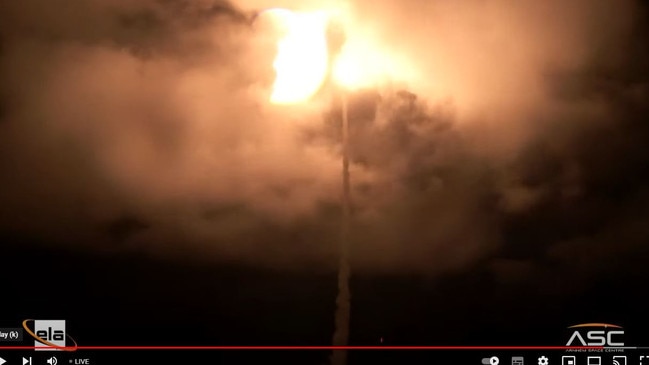
However some celebrations were kept on ice as preparations began for two more lift-offs over the next fortnight.
Mr Jones said with the next launch planned for this Monday and the final launch a week after that, there hasn’t been a lot of time to self congratulate.
“We’re out on site now and preparing for next week,” he said. “I was a bit bleary this morning but I’ve actually perked up and I’m okay now.”
NASA, which took a giant step approving takeoff at ELA’s Nhulunbuy site — the first ever such launch outside the United States — is understood to be thrilled with the outcome.
“NASA’s really happy,” Mr Jones said.
“I saw footage of both the launch control and space control centres and there was a lot of overt high-fiving. Everybody was happy. Even though (rocket launches) happen a lot, every one is hard.”
Aside from a couple of cameras near the launch which were toppled over, there wasn’t much to see at the site on Monday morning.
A plume-deflector prevents noticeable scorching on the launch pad, but memories of Sunday night’s lift-off are still vivid.
“I don’t think anybody here realised it was going to be so bright,” Mr Jones said.
“You felt a rumbling in your chest from the shock-wave. The coolest part is when the first stage separates. There’s a six-second delay but when it kicks off and goes, that’s when it really gets up and boogies.”
“Travelling at nearly Mach 8, the rocket is going so fast that when the engine cuts out at 70 seconds, it’s already 150km in space — 20km beyond the International Space Station — and has enough momentum to travel 315km before tipping to where it wants to go.”
A helicopter was dispatched to the landing site of the payload, which was expected to be returned to the Nhulunbuy base on Monday afternoon. The x-ray telescope on board the rocket was looking out 430 million light-years at the edge of the Milky Way at the Alpha Centauri star cluster. as well as the Alpha and Bravo stars.
It is hoped the data will contribute a greater understanding about the origins of life on other planets.
The replay of the launch livestream can be viewed at this link: https://www.youtube.com/watch?v=lSfugtxlXmw
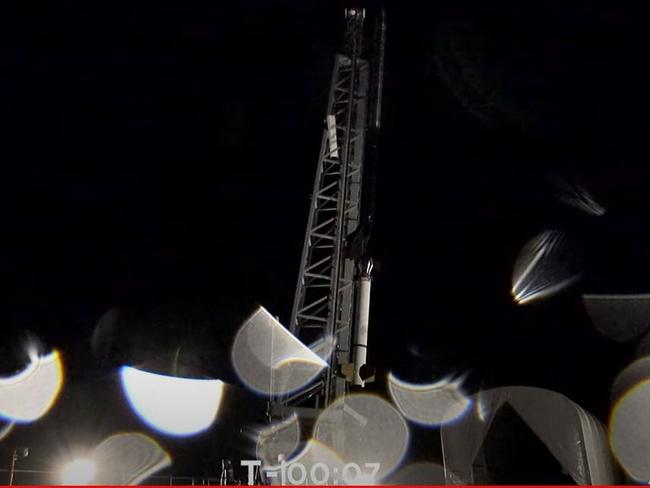
The rocket was expected to travel 300km during the 15 minutes it moved through space.
It was the first time the internationally renowned space agency has launched a rocket from a commercial port outside the USA.
The rocket was also the first to leave Australian soil in 26 years, since the 1995 launches from the Royal Australian Air Force Woomera Range Complex.
Ms Fyles called it “a landmark occasion for the Top End”.
“NASA is adding capacity and rocketing East Arnhem Land into the global spotlight for investors — this will help our industry grow, create more jobs for locals and more opportunities for businesses to expand,” she said.
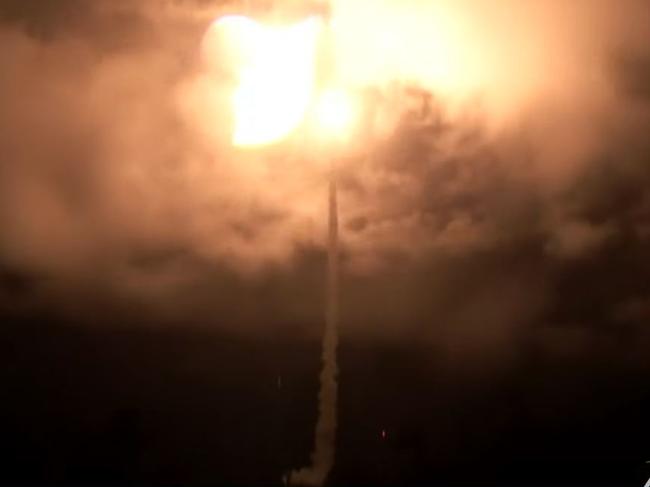
The rocket is the first of three NASA-designed rockets to be launched from the remote NT space centre, which will not enter orbit but instead collect valuable scientific information into the physics of the Sun, astrophysics, and the type of planetary science which can only be conducted in the southern hemisphere.
In a joint announcement between the NT government and the federal government, the rocket launches were praised as a watershed moment for the Australian space industry.
“This project will bring together global and local industry to take Australia’s space sector into a new era,” Prime Minister Anthony Albanese said.
Both governments hope the collaboration with NASA will encourage future joint scientific endeavours between Australia and the USA.
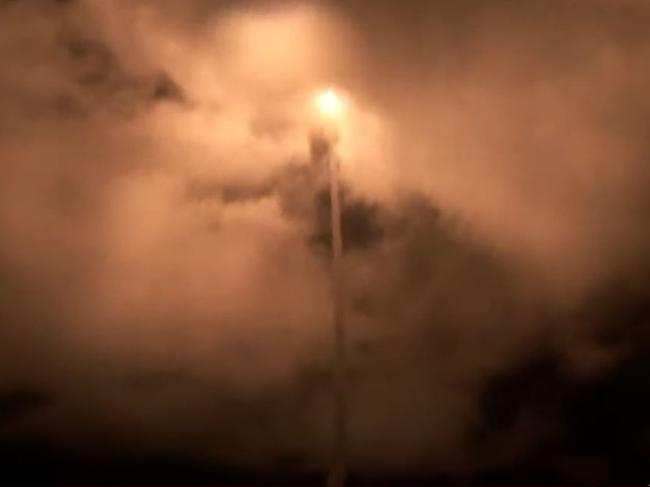
Australian Space Agency head, Enrico Palermo, said the launch was a significant milestone in the growth of space activities.
“This is another signal that Australia is go for launch — and will further cement our reputation as a nation that global space players want to do business with,” he said.
The launches mark a historic collaboration between some of the world’s foremost scientists and the world’s oldest living continuous culture.
The launch pad is on traditional land, which NASA has pledged to clean up after the launch by returning all the material and debris back to the US.
The Arnhem Space Centre is owned and operated by ELA, which hopes to drastically increase its capability to host 50 launches a year by 2024.
Mr Jones said the site’s geographic location and proximity to the equator would attract international space agencies.
“Our proximity to the equator being 12 degrees south gives us an astrodynamic and physics advantage over a lot of launch sites around the world and is highly desirable for large and complex orbital solutions in space,” he told SKY News.
Originally published as NASA launched Australia’s first commercial rocket into space from East Arnhem Land




